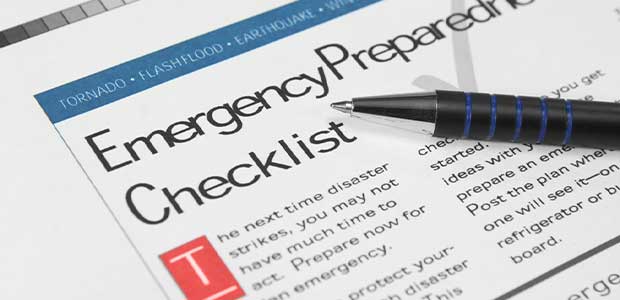
Handle Emergencies on Your Worksite Before They Happen
Having an emergency response plan and training employees on the plan is one of the ways employers can help save lives.
- By Stephen Rodgers
- Oct 28, 2022
If a disaster strikes and impacts your business or worksite, it’s important for teams to know how to respond. Whether it’s a fire, power outage, hurricane or another type of disaster, having an emergency response plan can help protect and save lives.
An emergency response plan will identify roles and outline tasks that can help minimize injuries, protect lives and even lessen property damage.
Before You Develop a Plan, Complete a Risk Assessment
Following OSHA regulations, businesses both small and large need to have an established emergency response plan. But first, you should complete a risk assessment.
A risk assessment can help you identify potential emergency scenarios. Depending on your business’s location, you may have an increased chance of experiencing natural disasters like hurricanes, earthquakes, or wildfires.
Completing a risk assessment for your business or worksite(s) will also enable you to determine resource requirements and develop plans and procedures.
Create an Emergency Response Plan and Ensure Employees are Trained
When an emergency occurs, you won’t have time to make a plan and find the right resources to execute it, or practice your response. A solid response plan will outline roles and responsibilities and help the team act on it in the event of an emergency.
The free online resource hub at ready.gov/business provides the following steps to help you create an emergency response plan:
- Review performance objectives for the program.
- Review hazard or threat scenarios identified during the risk assessment.
- Assess the availability and capabilities of resources for incident stabilization including people, systems and equipment available within your business and from external sources.
- Talk with public emergency services (e.g., fire, police and emergency medical services) to determine their response time to your facility, knowledge of its hazards and their capabilities to stabilize an emergency at your facility.
- Determine if there are any regulations pertaining to emergency planning at your facility; address applicable regulations in the plan.
- Develop protective actions for life safety (evacuation, shelter, shelter-in-place, lockdown).
- Develop hazard and threat-specific emergency procedures using the Emergency Response Plan for Businesses.
- Coordinate emergency planning with public emergency services to stabilize incidents involving the hazards at your facility.
Pro tip: How your business recovers from a disaster should be part of your plan as well.
With a Plan in Hand, Now it’s Time to Practice, Practice, Practice
If there is a fire on the worksite, would employees know what to do? Do they know who is in charge during an emergency? Are employees familiar with their responsibilities for building and information security?
These essential questions and more should be addressed during training. Having an emergency response plan is a great start. However, to successfully navigate an emergency, employees need to know how to execute the plan. Visit ready.gov/business-training for more information on which employees should receive various levels of emergency preparedness training.
In addition to helping employees be prepared, emergency response training also allows for emergency response plan testing. As you facilitate exercises, be sure to identify any gaps or deficiencies in the plan. Conducting training exercises can also give employees an opportunity to provide feedback and ask clarifying questions.
There are a few types of exercises that can be completed:
- Walkthroughs, workshops or orientation seminars: These are basic training for employees meant to familiarize them with their roles and responsibilities as defined in the plans.
- Tabletop exercises: These are guided by a facilitator where team members meet in an informal classroom setting to discuss their roles during an emergency and their responses to a particular emergency situation.
- Functional exercises: These allow employees to perform their duties in a simulated operational environment. Activities for a functional exercise are scenario-driven, such as the failure of a critical business function or a specific hazard scenario.
- Full-scale exercises: These are lengthy exercises, which are as close to the real thing as possible. It takes place on location using the equipment and personnel that would be called upon in a real event.
Additional Resources
For more details, resources and information to help ensure your business or worksite is ready in the event of an emergency, visit gov/business.
The U.S. Small Business Administration offers helpful resources online here for small business owners looking to prepare for and recover from an emergency.
You can also participate in nationwide exercises like the Great Shake Out and FEMA’s National Level Exercise to help prepare for disasters.
OSHA's On-Site Consultation Program may also be able to help you with free emergency preparedness trainings and consultations. Find your local office and more information at gov/consultation.